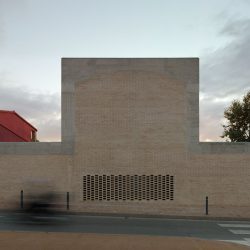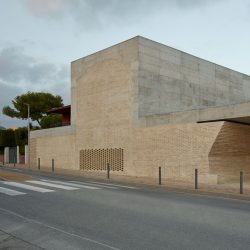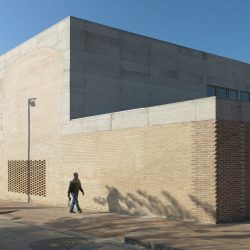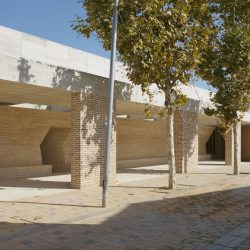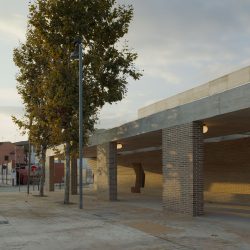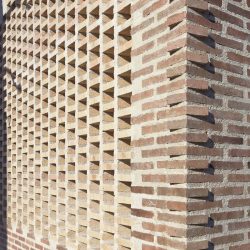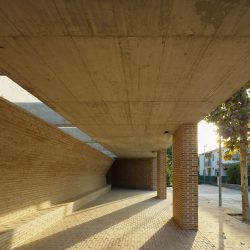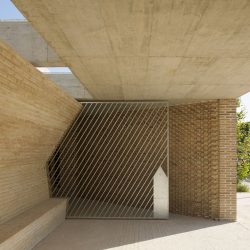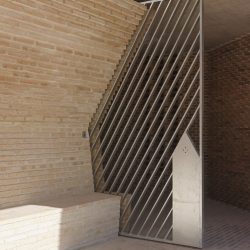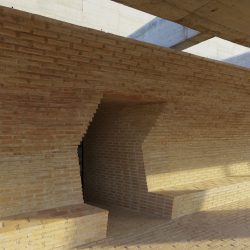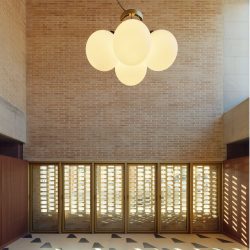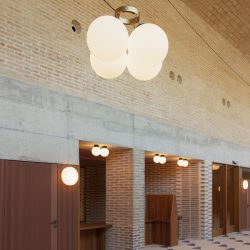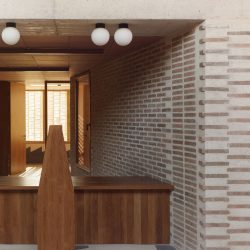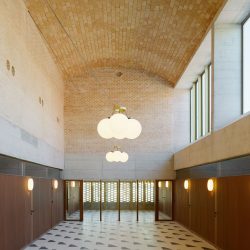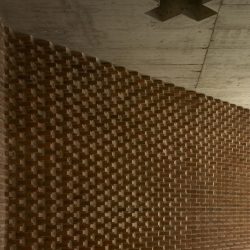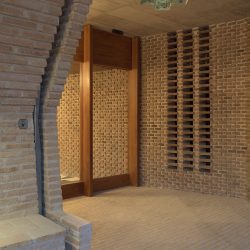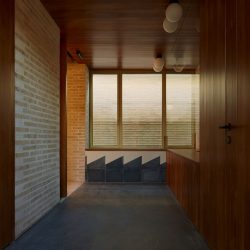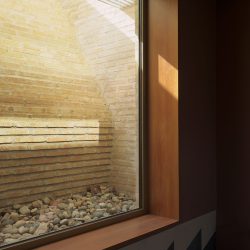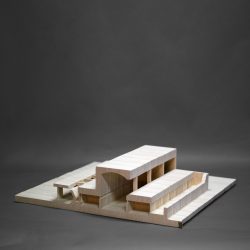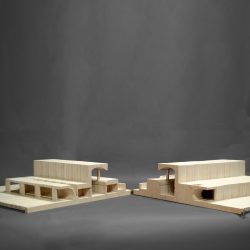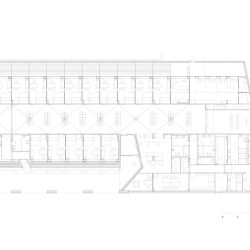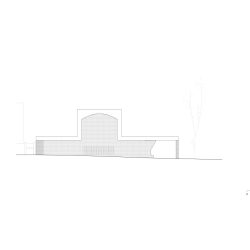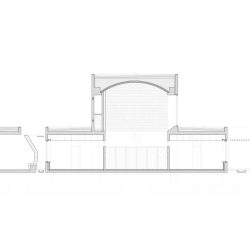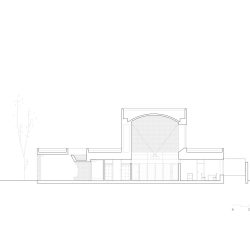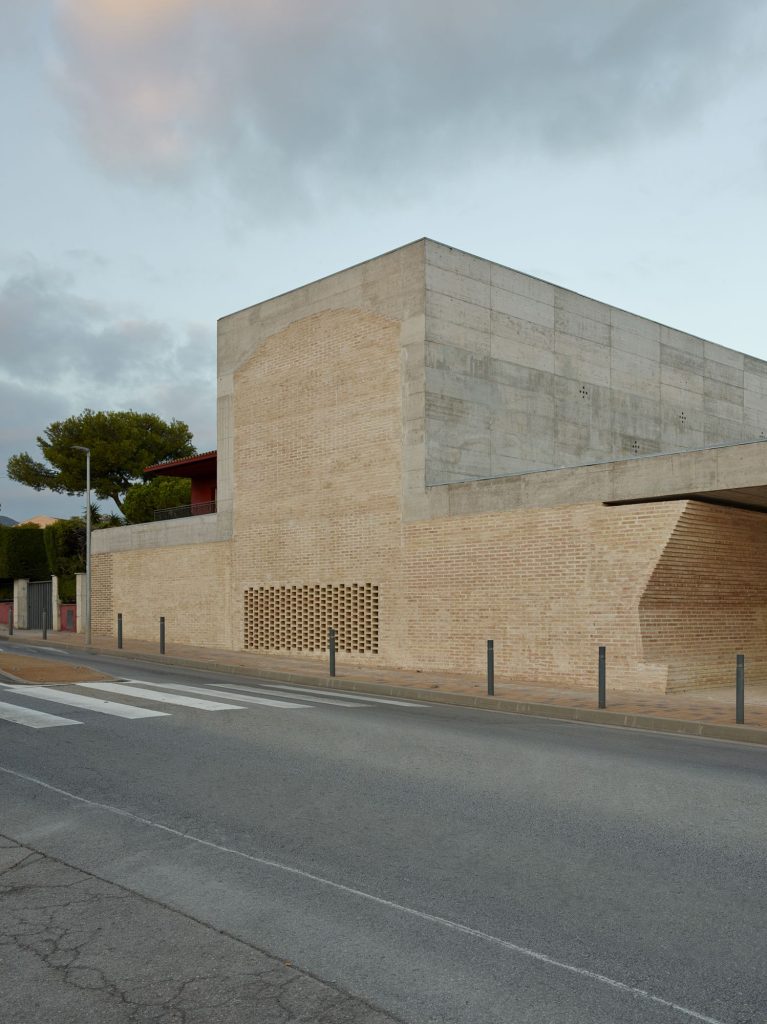
BAAS arquitectura . AIS . fotos: © Gregori Civera
The project stems from the desire to qualify the interior space and to integrate naturally with the scale of the surroundings.
The entire programme is located at street level, in a scheme of two lines of consultation rooms framing a higher room that receives light from the north from a high window. A classical three-nave section, resembling that of a chapel, where the gaze is directed towards the sky.
From the outside, the building gives very few clues to its interior space and shields itself with its opacity from the road, responding to the needs of privacy of the equipment.
The access route is gradual, inviting calm. A porch reception the visitor in a welcoming gesture, extending the street, where a long bench allows the visitor to rest and take a breath of fresh air in the shade. At the end of the route, a sloping wall introduces you to the nave, accompanying you with tenderness, to discover with some surprise the richness and light of the interior.
The materials used are the traditional ones of the place: ceramic brick for the walls and the back, concrete in its most austere condition and varnished pine wood. All built by local craftsmen with the clear intention of lasting over time.
Inside, the material and thickness of the walls favour a thermal inertia which, as has always been the case with traditional architecture, favours a more temperate climate.
The building is protected from the sun and ventilated naturally by opening the high windows to the north, cooling and renewing all the air inside.
_
_
Architecture: BAAS arquitectura, AIS
Location: Premià de Dalt, Barcelona, Spain
Type: Health Centre
Project Team: Antoni Garcés, Carla Llaudó, Carles Figuerola, Eva Olavarria, Alex Clarà, Alba Azuara
Client: CatSalut
Project date: 2019
Building date: 2021
Built surface: 1.407 m2
El proyecto nace de la definición de la calidad del espacio interior, sin ninguna concesión a su imagen. Usa una sección sencilla compuesta por dos líneas de salas de consulta que enmarcan una sala de espera mas alta que recibe la luz desde arriba. Una sección de tres naves, similar a la de una iglesia, donde la mirada se dirige hacia el cielo. La sala de espera como elemento protagonista del edificio, como un vacío rodeado de consultas médicas, como una plaza rodeada de edificios. El símil con una iglesia nos lleva a pensar en la posibilidad de cubrir esa nave con una bóveda catalana construida con ladrillos cerámicos. Todo con una voluntad de construir un edificio con materiales tradicionales del lugar, tratando de no violentar la pequeña escala de casas de su entorno más inmediato. Un gran porche recibe al ciudadano en un gesto que quiere ser de acogida y brazos abiertos.

